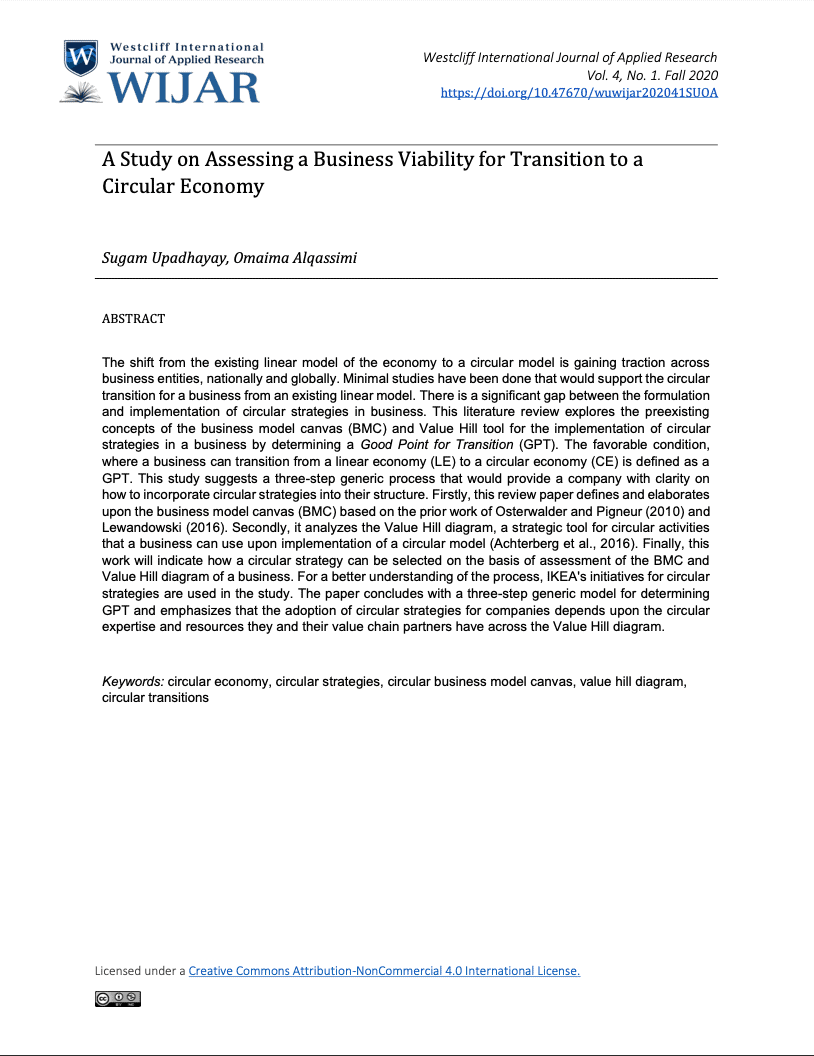A Study on Assessing a Business Viability for Transition to a Circular Economy

Author: Sugam Upadhayay, Omaima Alqassimi
Issue: Fall Issue, 2020
Download ArticleAbstract
The shift from the existing linear model of the economy to a circular model is gaining traction across business entities, nationally and globally. Minimal studies have been done that would support the circular transition for a business from an existing linear model. There is a significant gap between the formulation and implementation of circular strategies in business. This literature review explores the preexisting concepts of the business model canvas (BMC) and Value Hill tool for the implementation of circular strategies in a business by determining a Good Point for Transition (GPT). The favorable condition, where a business can transition from a linear economy (LE) to a circular economy (CE) is defined as a GPT. This study suggests a three-step generic process that would provide a company with clarity on how to incorporate circular strategies into their structure. Firstly, this review paper defines and elaborates upon the business model canvas (BMC) based on the prior work of Osterwalder and Pigneur (2010) and Lewandowski (2016). Secondly, it analyzes the Value Hill diagram, a strategic tool for circular activities that a business can use upon implementation of a circular model (Achterberg et al., 2016). Finally, this work will indicate how a circular strategy can be selected on the basis of assessment of the BMC and Value Hill diagram of a business. For a better understanding of the process, IKEA's initiatives for circular strategies are used in the study. The paper concludes with a three-step generic model for determining GPT and emphasizes that the adoption of circular strategies for companies depends upon the circular expertise and resources they and their value chain partners have across the Value Hill diagram.
